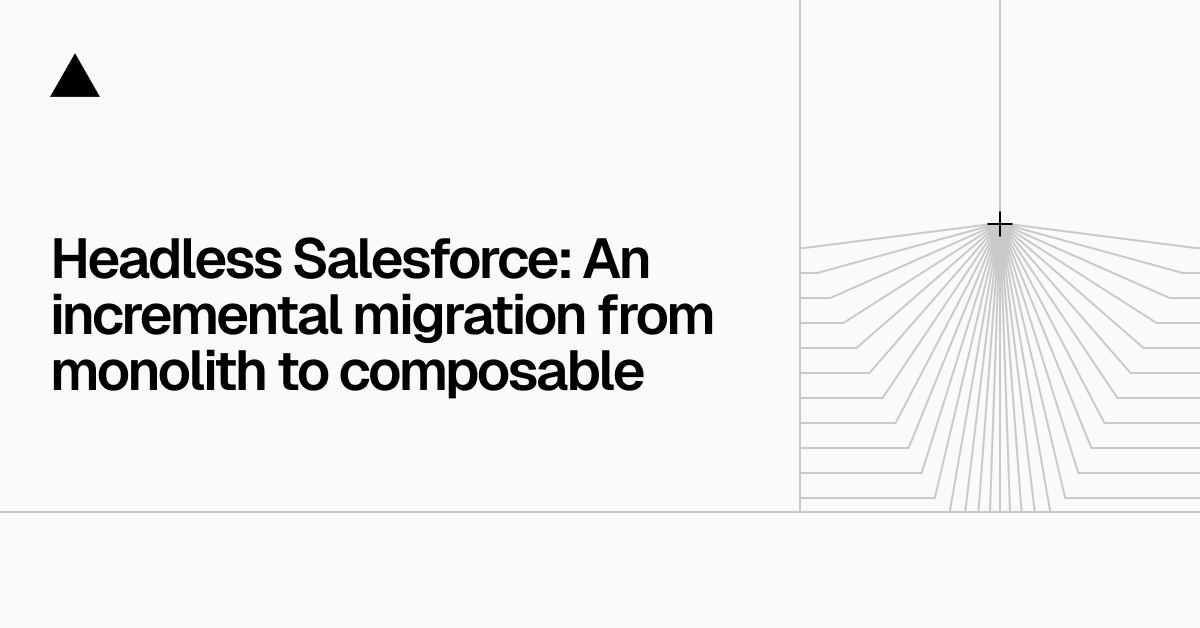Headless Salesforce: An incremental migration from monolith to composable

Table of Contents
- Introduction
- The Challenges of Monolithic Design in Salesforce Commerce Cloud
- Benefits of Headless Salesforce Migration
- Success Story: Global Sportswear Brand
- Key Strategies for Incremental Migration
- Conclusion
1. Introduction
This article explores the concept of migrating from monolithic design to headless architecture in Salesforce Commerce Cloud (SFCC) for ecommerce teams. It highlights the potential benefits of such a migration and presents a success story of a global sportswear brand that achieved impressive results.
2. The Challenges of Monolithic Design in Salesforce Commerce Cloud
Monolithic design in SFCC can limit frontend flexibility and hinder innovation for ecommerce teams. While the platform offers rapid deployments, it may pose challenges in terms of performance optimization, especially for mobile experiences. This can lead to increased cart abandonment rates and lower conversion rates.
3. Benefits of Headless Salesforce Migration
Migrating to a headless architecture in Salesforce can unlock a new level of performance without disrupting core business processes. It can lead to significant improvements in load times, cart abandonment rates, and mobile conversion rates. By decoupling the frontend from the backend, teams can leverage the best of both worlds - the robust capabilities of SFCC and the flexibility of a headless approach.
4. Success Story: Global Sportswear Brand
A global sportswear brand implemented a headless Salesforce migration strategy and achieved remarkable results. They halved their load times, reduced cart abandonment by 28%, and increased mobile conversion rates by 15%. This success story demonstrates the tangible benefits of transitioning to a headless architecture in SFCC.
5. Key Strategies for Incremental Migration
To successfully migrate from a monolithic to a headless architecture in SFCC, ecommerce teams can adopt incremental migration strategies. This approach allows for a phased transition, minimizing disruption to existing operations while gradually implementing new frontend architectures and technologies. Key strategies include conducting a thorough assessment, defining clear objectives, and prioritizing modules for migration.
6. Conclusion
In conclusion, transitioning to a headless architecture in Salesforce Commerce Cloud can offer significant performance improvements for ecommerce teams. By following a strategic and incremental migration approach, teams can unlock new levels of frontend flexibility and innovation while leveraging the core capabilities of SFCC. The success story of a global sportswear brand serves as inspiration for organizations looking to enhance their ecommerce experiences through headless Salesforce migration.